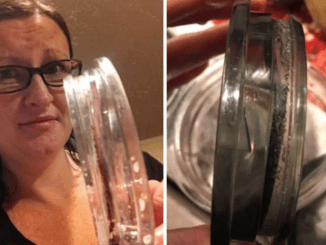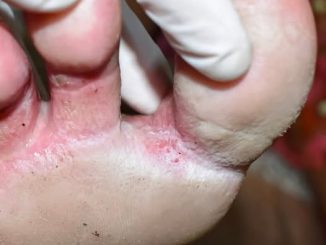The Timeless Role of the Vintage Derbac Soap Nit Comb
Head lice, a pesky yet common nuisance, have plagued human society for centuries. Among the tools that stood the test of time in combating this issue is the vintage Derbac soap nit comb. Made in England during the 1930s and 1940s, this metal lice comb was a household and institutional staple for lice removal. Encased in its practical paper envelope with instructions, the comb offered an effective and reusable method for removing lice and their eggs, especially during an era before modern chemical treatments.
The Historical Significance of the Derbac Nit Comb
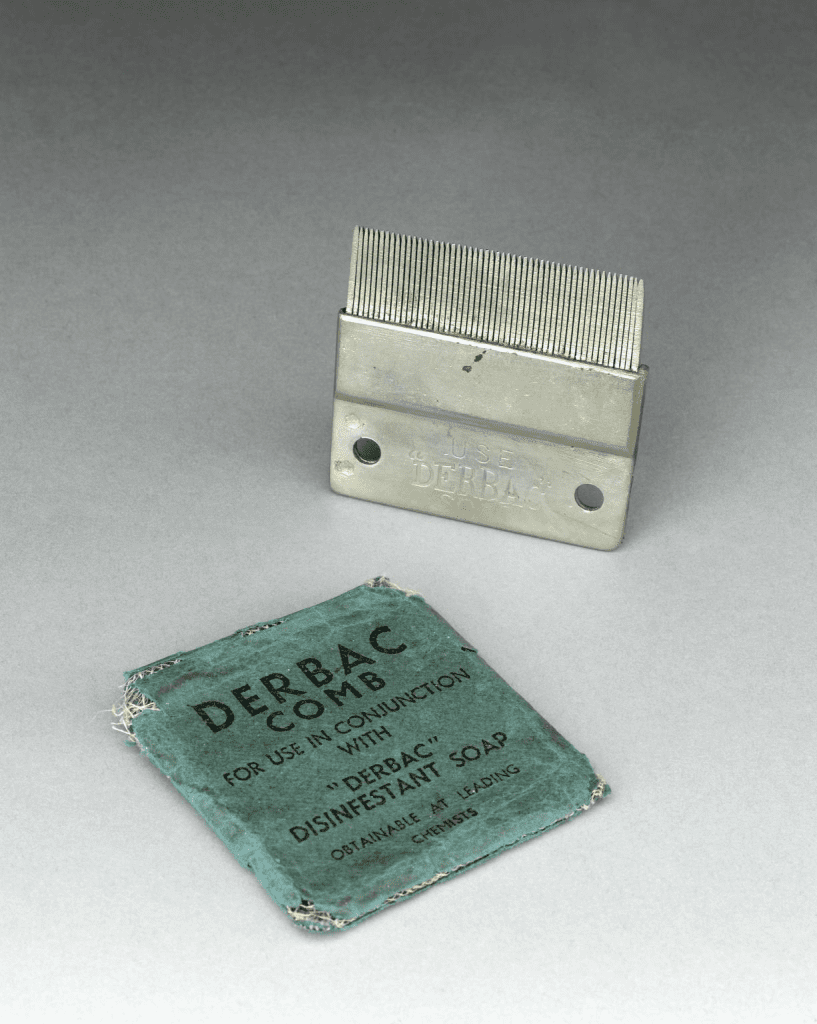
Back in the early 20th century, lice infestations were widespread, particularly among children in schools. With limited access to chemical treatments or advanced hygiene products, families and school nurses relied heavily on durable tools like the Derbac nit comb. The comb was crafted with fine metal teeth to meticulously remove lice and their eggs (commonly known as “nits”) from human hair, ensuring thorough cleansing.
The Derbac comb, paired with Derbac disinfectant soap, became synonymous with lice treatment. Its design wasn’t just functional—it was a product of necessity, reflecting the hygiene practices of its time. Its reusability made it both eco-friendly and economical, aligning perfectly with the resource-conscious mindset of the 1930s and 1940s.
What Made the Derbac Comb Stand Out?
The Derbac nit comb wasn’t just another comb—it was a meticulously engineered tool designed specifically for lice removal. Here’s why it became a household essential:
1. Fine Metal Teeth for Precision
The closely spaced metal teeth of the comb were its standout feature. These teeth were crafted to catch even the smallest lice and their tiny, sticky eggs. Unlike regular combs, the Derbac comb provided unmatched precision, ensuring a cleaner scalp with every use.
2. Durable and Reusable Design
Made from solid metal, the Derbac comb was built to last. It could be sterilized and reused multiple times, making it an excellent investment for families and schools alike. Its durability was especially important during the Great Depression and World War II, when resources were scarce.
3. Paired with Disinfectant Soap
To enhance its effectiveness, the Derbac comb was often used in conjunction with Derbac disinfectant soap. This combination not only removed lice but also disinfected the scalp, reducing the risk of reinfestation.
4. Compact and Portable
The comb came in a small, lightweight paper envelope with clear instructions, making it easy to carry and store. Its portability ensured it could be used at home or during routine school lice checks.
Lice Infestations in the 20th Century
During the early 1900s, head lice were a common issue, particularly in schools and crowded living conditions. Children were especially vulnerable, often passing lice to one another through close contact or by sharing personal items like hats, brushes, and combs. This led to the introduction of school-based checks, often conducted by the “nit nurse.”
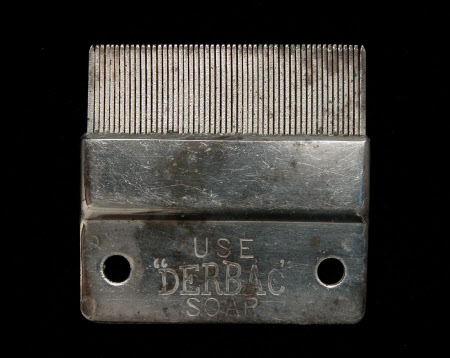
The nit nurse became an infamous figure for many schoolchildren. Armed with tools like the Derbac comb, she would meticulously examine children’s scalps for signs of infestation. While these visits were dreaded, they played a crucial role in controlling the spread of lice in communities.
How the Derbac Comb Worked
Using the Derbac comb required a methodical approach to ensure effectiveness. Here’s how it was typically used:
- Preparation: The hair was washed thoroughly with warm water and Derbac disinfectant soap to loosen the lice and nits.
- Sectioning the Hair: The hair was divided into small sections to ensure no strand was overlooked.
- Combing: Starting from the scalp, the comb was pulled through each section of hair, catching lice and nits on its fine metal teeth.
- Cleaning the Comb: After every pass, the comb was cleaned with warm water to remove trapped lice and eggs.
- Repeat: The process was repeated until the scalp and hair were completely clear.
The Importance of Early Detection and Treatment
The Derbac comb wasn’t just a tool—it was part of a larger strategy to manage and prevent lice infestations. Early detection was key to stopping the spread of lice, especially in schools where close contact made outbreaks more likely. By removing lice and their eggs early, families and institutions could prevent severe infestations and the accompanying discomfort.
Signs of a Lice Infestation:
- Persistent itching, particularly around the scalp and neck.
- Redness or irritation caused by lice bites.
- Visible nits attached to hair strands, especially near the scalp.
- Crawling lice, though these are harder to spot due to their small size and quick movements.
The Legacy of the Derbac Comb
Though modern lice treatments now include chemical shampoos and electronic combs, the vintage Derbac soap nit comb remains an iconic tool in the history of personal hygiene. Its simple yet effective design is a testament to the ingenuity of the past, when resources were limited but the need for practical solutions was great.
For collectors, the Derbac comb is a fascinating artifact, offering a glimpse into mid-20th century hygiene practices. For those nostalgic about the “nit nurse” days, it’s a reminder of a time when community health relied heavily on hands-on tools and methods.
Why Vintage Hygiene Tools Still Fascinate Us
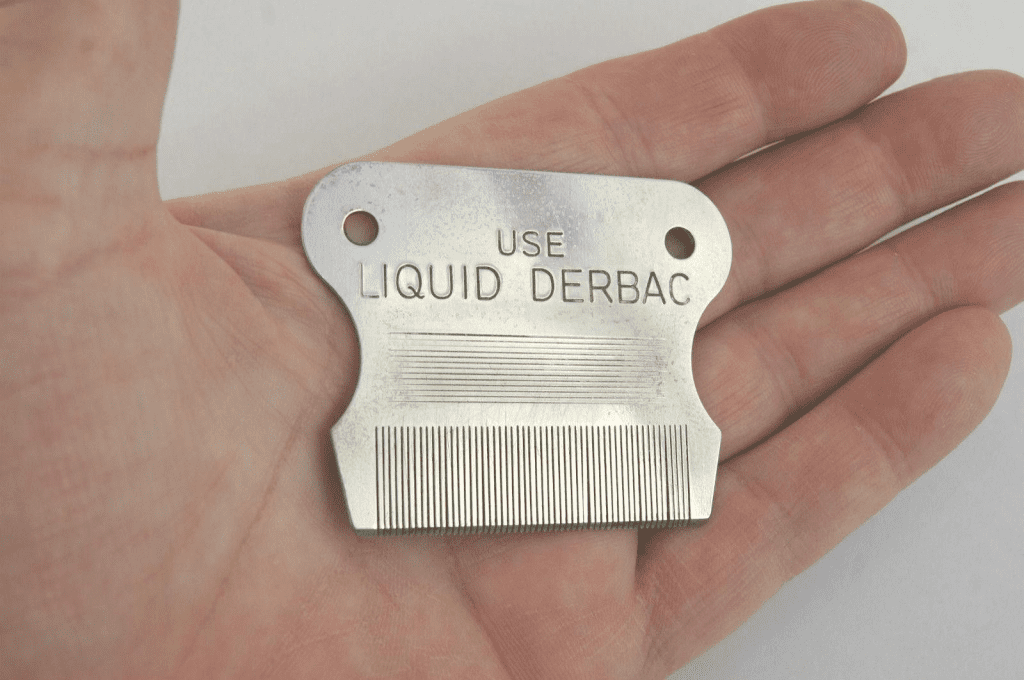
In today’s world of disposable products and advanced technology, vintage tools like the Derbac comb remind us of a simpler yet more sustainable approach to health and hygiene. They highlight how much thought and care went into designing items that were built to last, often with minimal environmental impact.
From its ergonomic design to its durable materials, the Derbac comb offers lessons in practicality and resourcefulness that remain relevant today. Whether displayed in museums, purchased by collectors, or used as inspiration for modern tools, it’s clear that the legacy of the Derbac comb endures.
Conclusion: A Tool That Stood the Test of Time
The vintage Derbac soap nit comb is more than just a comb—it’s a piece of history that reflects the ingenuity and practicality of its time. Designed to tackle the persistent problem of lice infestations, it offered a reusable, effective, and accessible solution for families and schools alike. While today’s treatments have evolved, the Derbac comb’s legacy serves as a reminder of how simple tools can make a big impact.
Whether you view it as a nostalgic relic or a symbol of resourceful hygiene practices, one thing is clear: the Derbac nit comb holds a special place in the history of personal care.

